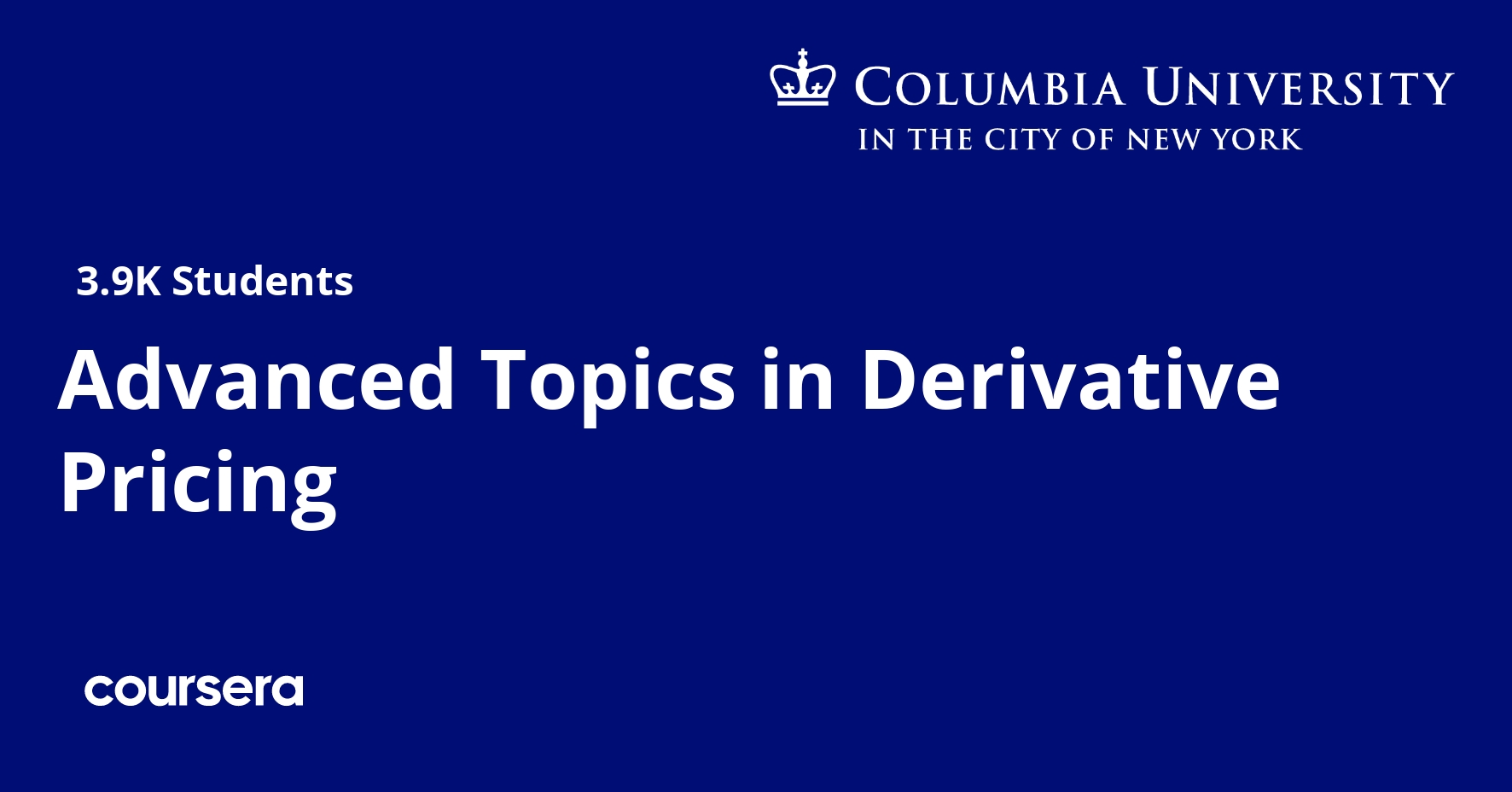Description
This course discusses topics in derivative pricing. The first module is designed to understand the Black-Scholes model and utilize it to derive Greeks, which measures the sensitivity of option value to variables such as underlying asset price, volatility, and time to maturity. Greeks are important in risk management and hedging and often used to measure portfolio value change. Then we will analyze risk management of derivatives portfolios from two perspectives—Greeks approach and scenario analysis. The second module reveals how option’s theoretical price links to real market price—by implied volatility. We will discuss pricing by volatility surface as well as explanations of volatility smile and skew, which are common in real markets. The third module involves topics in credit derivatives and structured products and focuses on Credit Debit Obligation (CDO), which played an important part in the past financial crisis starting from 2007. We will cover CDO’s definition, simple and synthetic versions of CDO, and CDO portfolios. The final module is the application of option pricing methodologies and takes natural gas and electricity related options as an example to introduce valuation methods such as dynamic programming in real options.
What you will learn
Course Overview
Equity Derivatives in Practice: Part I
This module contains the first part of equity derivatives. After a brief review on the binomial model, we introduce Black-Scholes model and how to utilize this model to derive so-called “Greeks.” Greeks are very important indices in options, which measure the sensitivity of option value to a wide range of variables such as stock price and volatility. We are also covering risk management and hedging. Greeks play an important role in risk management and hedging, as traders and quants often use Greeks approach to hedge and construct their portfolios. Moreover, we will introduce scenario analysis and how Greeks are used to measure portfolio value change. In the end, we are covering an introduction to implied volatility and volatility smile. Implied volatility is a key link between market option prices and options prices under the framework of Black-Scholes model. We’ll be covering more about this topic in the next module.
Equity Derivatives in Practice: Part II
This module contains the second part of equity derivatives. Following past module, we’ll continue discussing implied volatility and volatility smile. We introduce two main explanations about volatility skew: risk aversion and leverage effect. Next, we will cover how to utilize volatility surface to price derivatives, including digital options and range accruals. Meanwhile, we will introduce a method to obtain risk-neutral density of terminal stock price distribution from option prices. We will also cover two additional topics about joint distribution of two securities and dynamic replication in practice. In module 3, you will have a real-world assignment where you will use all the knowledge from previous modules to solve the problems about equity derivatives. In this assignment, you will be exposed to many think-about questions where you can jump out of the Black-Scholes framework and think in a model-free world.
Review and Assignment for Equity Derivatives






